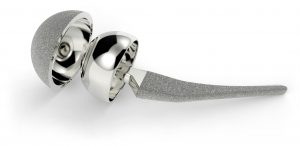


This made metal-on-metal implants an especially attractive option for younger and highly active patients.įurther design developments led to the use of MOM implants made from a cobalt-chromium alloy, and the use of these particular MOM implants really took off in the 2000s, with more than 600,000 Americans receiving metal-on-metal hip implants between 20, before their use began to drop sharply due to product recalls, lawsuits, and an increased awareness of the serious risks associated with them. They were thought to have several advantages over the conventionally used metal-on-polyethylene implants, including less “wear and tear,” greater durability, and the possibility of using larger femoral heads (the “ball” part of the ball-and-socket), which could provide greater stability and range of motion in the patient, as well as a lower chance of dislocation. Metal-on-metal (MOM) hip implants were first used in 1966 and quickly gained in popularity. Traditional hip replacements have generally used a metal “ball” along with a polyethylene (plastic) liner or “socket.” More recently, different combinations of metal alloys, crosslinked polyethylene, and ceramics have become the most widely used. According to the American Academy of Orthopedic Surgeons, more than 450,000 THR surgeries are performed annually in the United States. It’s currently considered to be among the safest and most successful orthopedic surgeries. Total hip replacement (THR) surgery (also called total hip arthroplasty) has been around for almost a century. An accumulation of these particles can result in harmful metallosis, (metal toxicity), or cobaltism from shed cobalt particles, which can lead to symptoms ranging from tissue death and bone loss to neurological complications that mimic Alzheimer’s disease. With the friction that occurs from normal wear and tear, metal particles are shed into the surrounding tissues and bloodstream. MOM implants are those in which the “ball” and “socket” of the hip joint are both made from an alloy that includes cobalt and chromium. Hip replacement surgery is one of the most common orthopedic surgeries performed in the United States each year, and has brought relief to millions who have suffered from painful conditions like osteoarthritis or rheumatoid arthritis.īut despite developments made in the past few decades, the procedure still carries potentially serious risks for some patients, especially those who received metal-on-metal (MOM) hip implants.


 0 kommentar(er)
0 kommentar(er)
